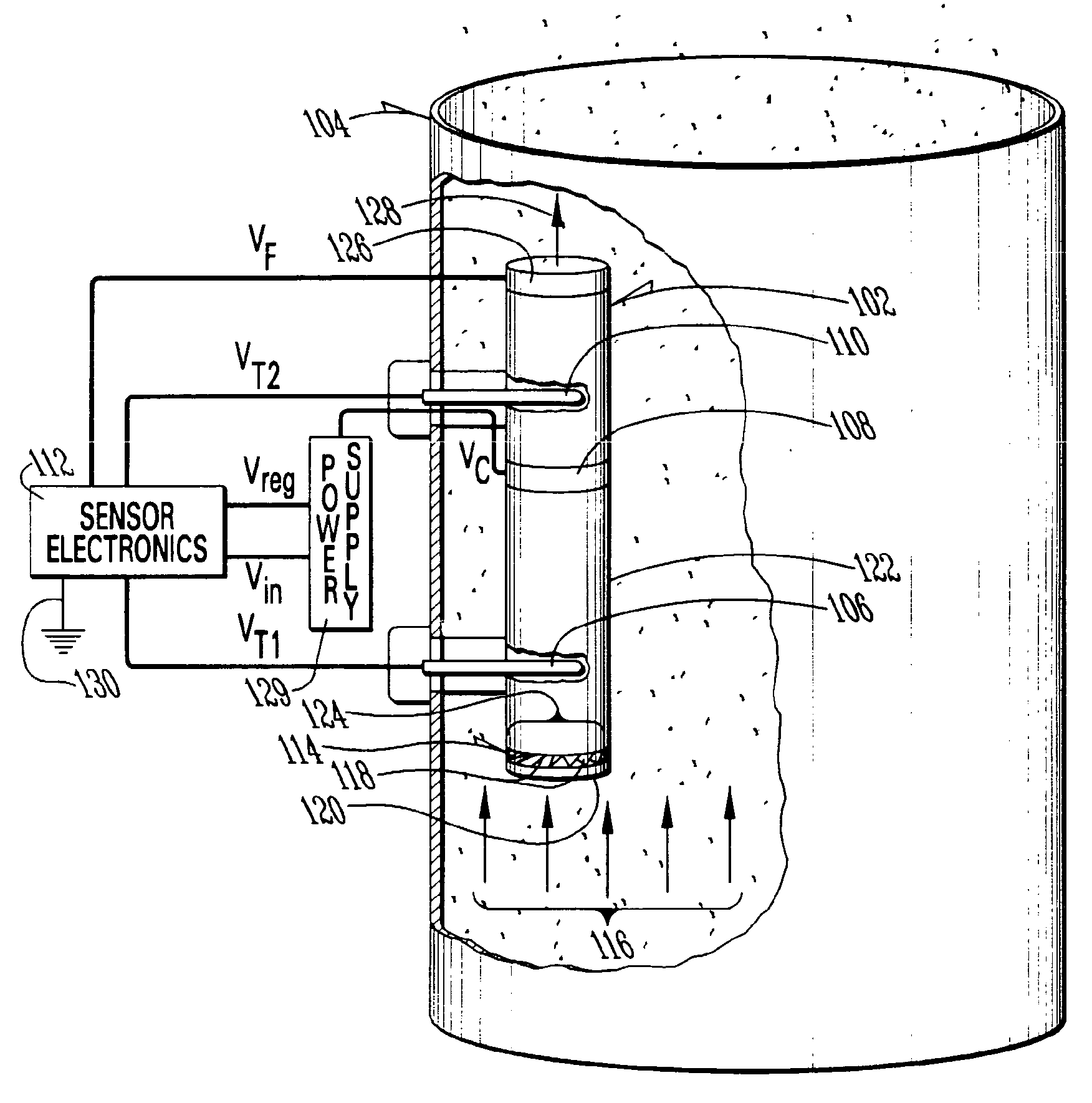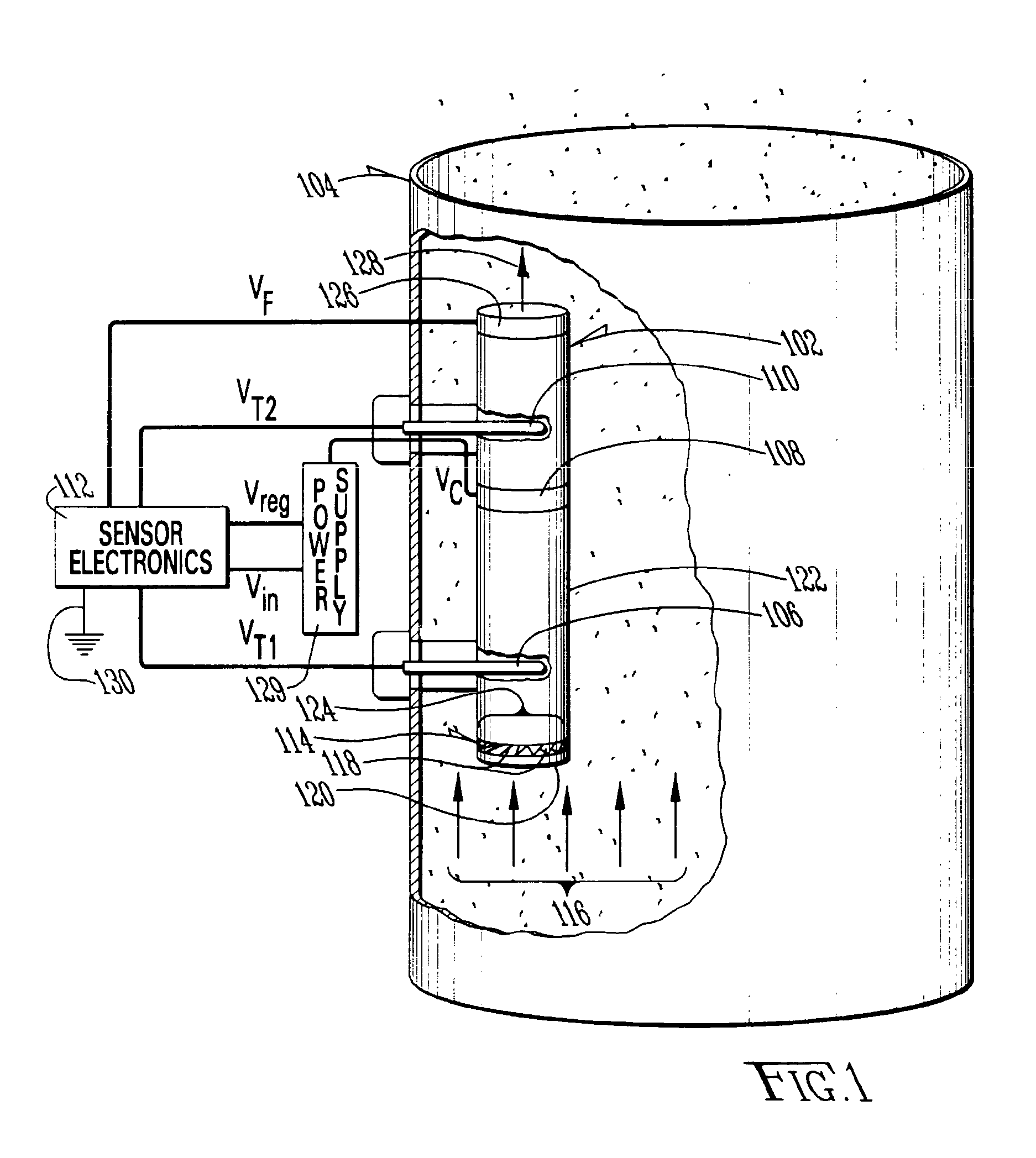Method and apparatus for monitoring particles in a flowing gas
a technology of airborne particles and flow gas, which is applied in the direction of particle and sedimentation analysis, measurement devices, instruments, etc., can solve the problems of reducing visibility, creating haze and smog, and soiling of textiles and building materials, and achieves simple design and low construction cost.
- Summary
- Abstract
- Description
- Claims
- Application Information
AI Technical Summary
Benefits of technology
Problems solved by technology
Method used
Image
Examples
example 1
Calibration for Leak Emission Rate Apparatus
Particle size distribution data were collected from twelve inlets and three outlets of a fabric filter on a rotary dryer used to process bentonite. Particles were obtained by trapping, and the size distribution data were obtained by cascade impactor measurements. These data are shown in FIG. 2. On average, the twelve inlets each had a concentration of 0.259 grams of bentonite particles per cubic meter of air at standard conditions of 60° F. and 14.73 psia. The three outlets had an average concentration of 0.047 g bentonite per standard cubic meter of air. Particle size distributions for the inlets averaged about 0.7% of particles having a nominal diameter of less than 2.5 microns, whereas the outlets averaged about 10% of particles having a nominal diameter less than about 2.5 microns. The measured outlet distribution for the fabric filter represents baseline emissions for a well-operated fabric filter. The measured inlet distribution re...
example 2
Calibration for Passive Atmospheric Sampler
Baseline calculations may be obtained using, for example, the aerodynamic particle sizer (APS) Model 3310 sold by TSI Inc. of St. Paul, Minn., which is described by Wilson, J. C. and Liu, B. Y. H., J. Aersol. Sci. 11:139-150 (1980); and Baron, P., Aerosol Sci. and Technol. 5:56-67, (1985). These measurements may be performed in parallel or series flow configuration with monitoring device 102. The baseline functions are mapped to the signal output of triboelectric probes 106, 110, relating the signal outputs from triboelectric probes 106, 110 to actual mass and particle size distributions in ambient air. The mapping may be, for example, by a least squares fit of any order using Equations (3) and (4), or an adaptive artificial intelligence algorithm including a neural network. The mapping function may take into account additional factors, such as measurements from a variety of sources. For example, conventional pollen counts and dust counts...
example 3
Calibration for Other Environments of Use
Calibration for other environments of use may be done in whatever specific application is selected. By way of example, example, monitoring device may be provided for use as an ambient air monitor in a flue stack, a clean room, or a biological or chemical laboratory. The monitoring device is installed with various options described above, as may be useful in the environment of use. Calibration commences by measuring particle sizes through other suitable instrumentation, for example, instruments that may be more difficult to maintain or expensive to produce or using a combination of instruments capable of measuring a wide range of particle sizes. For example, a cascade impactor or another instrument may provide a basis for calibration.
Calibration techniques may vary with the environment of use. For example, different environments may contain particles having different shapes, sensitivities, and origins, such as biological, organic and inorg...
PUM
 Login to View More
Login to View More Abstract
Description
Claims
Application Information
 Login to View More
Login to View More - R&D
- Intellectual Property
- Life Sciences
- Materials
- Tech Scout
- Unparalleled Data Quality
- Higher Quality Content
- 60% Fewer Hallucinations
Browse by: Latest US Patents, China's latest patents, Technical Efficacy Thesaurus, Application Domain, Technology Topic, Popular Technical Reports.
© 2025 PatSnap. All rights reserved.Legal|Privacy policy|Modern Slavery Act Transparency Statement|Sitemap|About US| Contact US: help@patsnap.com



